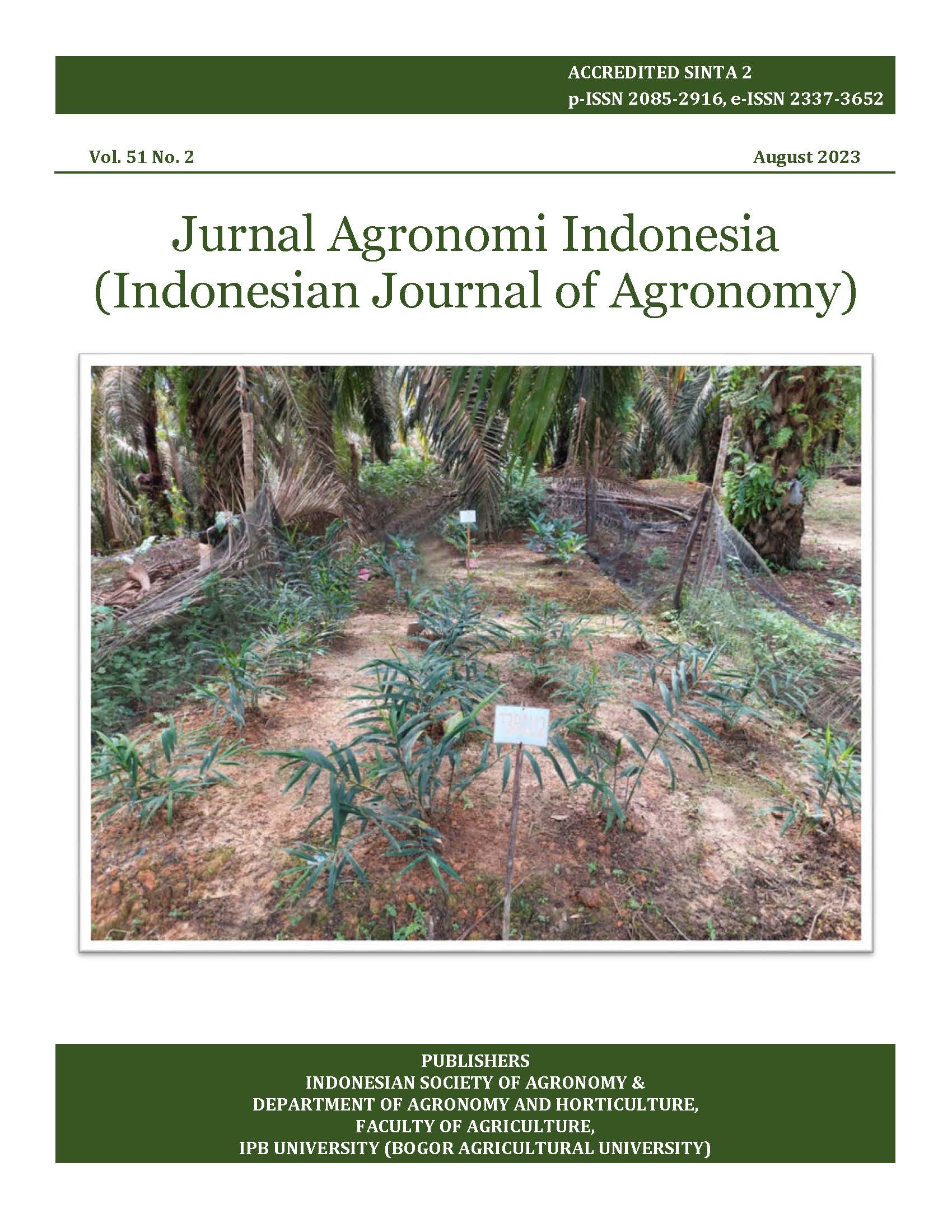Accession variation in starch, chlorophyll, and antioxidant content of cardamom (Amomum cardamomum) leaves
Abstract
Cardamom (Amomum cardamomum) is a herbal plant with various phytochemical compounds such as phenols, starch, tannins, terpenoids, flavonoids, and antioxidants. Cardamom of the same type but originating from different regions can produce variations in the content of metabolites. This study aimed to select cardamom accession containing high starch, chlorophyll, and antioxidant capacity. The research was conducted at Biopharmaca Experimental Garden, Cikabayan IPB University from March to August 2022 using four cardamom accessions, i.e., Bogor Hijau, Bogor Merah, Ciamis and Sukabumi. Three leaves were taken for each accession, with three replications. The leaves taken were numbers 5, 6, and 7 counted from the tops of the cardamom plant. The methods used in this study were the phenol-sulfuric acid method, the DMSO method, the DPPH method, and the CUPRAC method. The results showed that the highest starch content was produced by the cardamom of Bogor Merah accession, with an average of 3.63 g (100 g)-1 FW. The highest total chlorophyll content was found in the cardamom of Bogor Hijau accession, with an average of 1.9 mg g-1 FW. At the same time, the highest antioxidant capacity using the DPPH method was produced by the cardamom of the Sukabumi accession with an average of 1.28 μmol TE g-1 FW. In comparison, the highest antioxidant capacity of the CUPRAC method was produced by the cardamom of the Bogor Hijau accession with an average of 5.71 µmol TE g-1 FW. Thus, it is recommended to use Bogor Merah dan Bogor Hijau accession for further evaluation.
Keywords: accession, antioxidant activity, cardamom leaves, chlorophyll, starch













